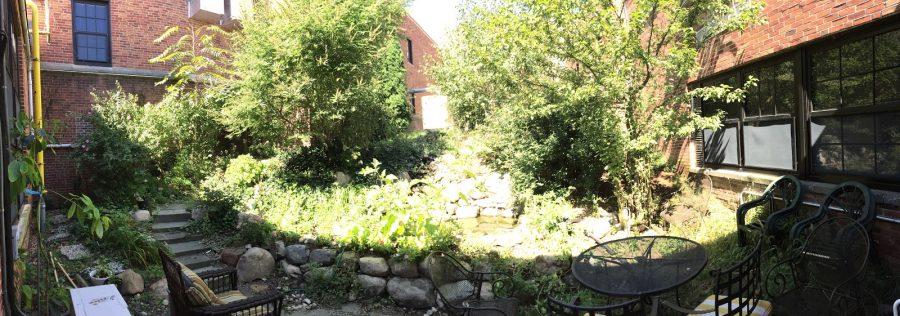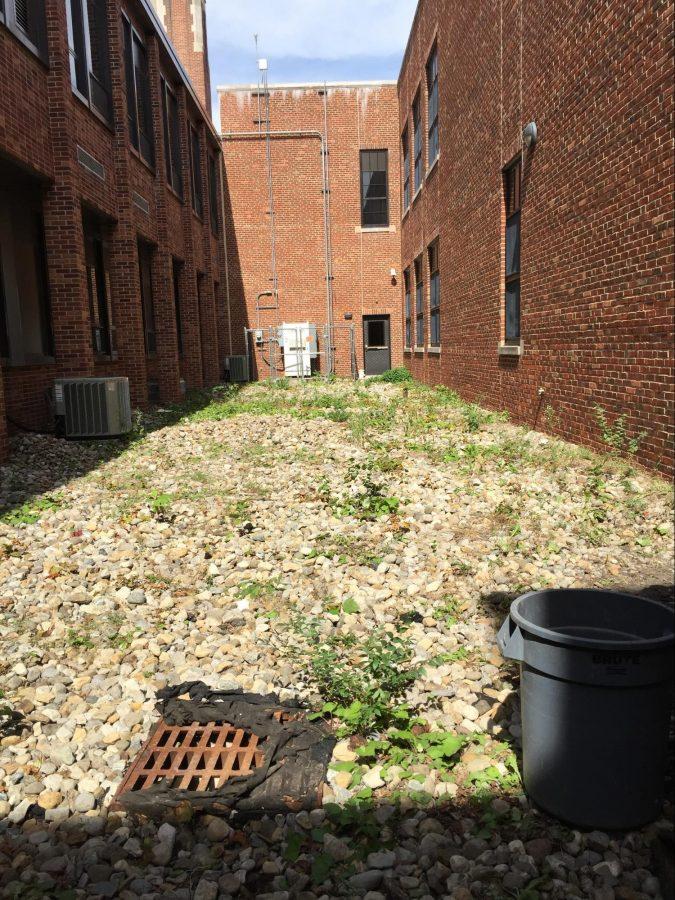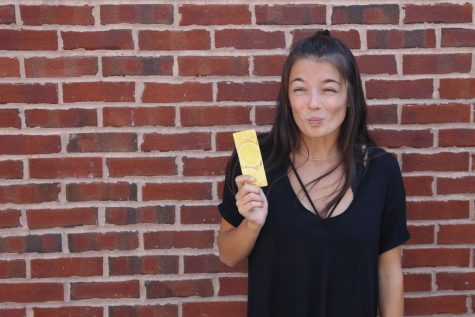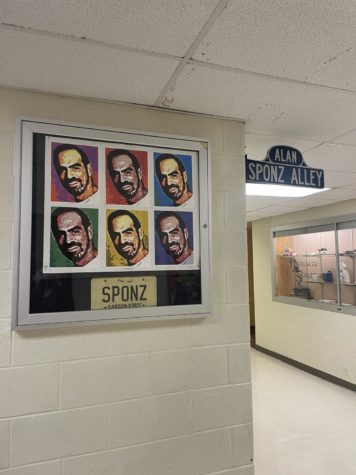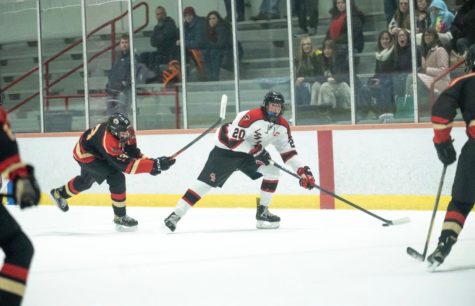Why did the chickens cross into the courtyard?
The current home of the turtle and a chicken coop, which is located on the upper level of the courtyard accessible through Principal John Arlotta’s office.
September 27, 2016
An empty courtyard will be put to good use once it is transformed by the students of Environmental Science.
After housing chickens in a smaller, cramped courtyard only accessible through Principal John Arlotta’s office, as has been done in previous years, the chickens raised by Mrs. Heather McDermott’s students will be moved to the courtyard accessible through the hallway that connects the science wing and junior hallway.
“It just didn’t have good access. For the chickens we’re gonna have to get in there a couple times a day,” said McDermott, as she painted the door of the coop that will hold the chickens. “He was happy to have us go through there, but I figured ‘there’s gotta be a better spot.’”
The chickens will act as a real life experience for the students, who will be apart of everything from the building of their home to the harvesting of their eggs.
Once the courtyard is liveable, the door to a variety of projects will be opened up. Before the chickens can move into their new and improved home, students will play different roles in preparing the new space for them. Currently, rocks cover the entire outdoor space in between the high school science classrooms and the middle school Home Economics kitchen, where the courtyard will be both easily accessible and visible.
“In Mr. Arlotta’s courtyard, a lot of people couldn’t see the chickens. A lot of people didn’t even know we had the chickens. Here you can see it from classroom windows and from the doors,” McDermott said.
We will take the remnants from the chickens, compost it – it is good fertilizer- we will take the remnants from the kitchen, anything that’s compostable we will take from there to make our own fertilizer or make our own soil.
— Mrs. Heather McDermott
There is a great deal of work to do. The chickens’ new home is being completely transformed and while there are numerous tasks that go into making the courtyard suitable for the chickens, the process is being moved along with the help other classes.
“The pre-engineering classes are putting together three separate compost bins which we will be able to use. We will take the remnants from the chickens, compost it – it is good fertilizer- we will take the remnants from the kitchen, anything that’s compostable we will take from there to make our own fertilizer or make our own soil,” McDermott said.
The current state of the courtyard doesn’t look very homey. Covered in large stones from wall to wall, splotches of the ground are beginning to show through now that students have begun shoveling the rocks to the sides of the courtyard.
“It is still very covered with rocks but there are a few dents from our class,” said Caroline Keller, a student in McDermott’s advanced placement Environmental class. “I cleared a small amount of the court yard. It’s very time-consuming and harder than it looks.”
Once the rocks are out of the way, the chicken’s furnishings can be moved in.
“We will get the chicken coup stained, put together, insulated and roofed, and then we are going to put up a garden, a waterfall, a whole bunch of other things, said McDermott, counting the many jobs off on her paint-covered fingers. The teacher plans on moving the chickens in once the warm weather hits, and she would be pleased if the courtyard was completed prior to graduation. Among the many projects presented by this new outdoor classroom, McDermott hopes to perform a particular project that is out of the “egg”
“There is some research being done by high school kids, and it was successful. They were able to hatch an egg outside of its shell. I’ve been looking at it, reading about it, inquiring about it…we will present it to the class and see if everyone wants to do it or not,” McDermott said.
Eventually, the courtyard will educate and be enjoyed by the entire student body. In order to acquire the soil and other materials needed, Erica Jones (‘17), one of McDermott’s students is in the process of writing a grant.
“The grant I am applying for is $10,000,” Jones said. It is a grant from Sustainable Jersey for schools, so that is an organization that covers New Jersey for sustainability projects.”
In light of the chicken’s big move, Mr. Arlotta is slightly torn up about the potential emptiness of his courtyard, where the chickens live aside a turtle, who spends his days floating in the waterfall built by Environmental students of past years.
“It gets very lonely in the office and that was part of the reason why we wanted them there in the first place. Please don’t take the turtle,” Arlotta said, “we’ve grown very attached to each other.”



